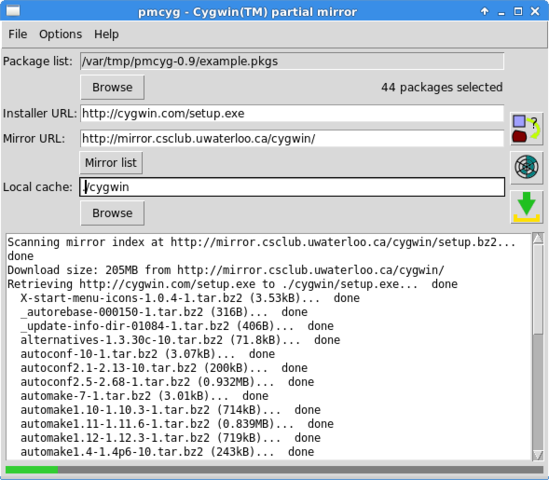cryptmount is an open source and freely distributed command-line software implemented in C and designed to be used on any GNU/Linux operating system for easy and quick mounting of encrypted filesystems.
Features at a glance
The software has been engineered in such a way that it can support both the device-mapper and loopback device mechanisms for either ordinary files or raw block devices.
This tool makes it easy for a non-root user (without administrative privileges) to configure the respected devices that are required to access an encrypted filesystem.
cryptmount requires an initial configuration of the encrypted filesystem in order to mount and unmount the respective file system on demand only by providing the decryption passphrase.
Getting started with cryptmount
The program is fully compatible with all distributions of Linux, independent of a hardware architecture. To install it and optimize it for your GNU/Linux system and hardware platform, download the tar.gz archive from Softoware, save it on your computer, unpack it and open a terminal emulator.
In the terminal window you can navigate to the location of the extracted archive files using the ‘cd’ command, configure and compile the project using the ‘./configure && make’ command, as well as to install it system wide by running the ‘make install’ command as root or with sudo.
To use it, execute the ‘cryptmount’ command in a terminal emulator, but you will need to parse various parameters, such as an option and the target device. To view its command-line options, type the ‘cryptmount --help’ command.
Under the hood and availability
cryptmount is written entirely in the C programming language, which means that it is small and fast. It is available for download as native installers for Debian/Ubuntu and Red Hat Enterprise Linux/Fedora, and compatible distributions, but supporting only the 32-bit hardware platform. Use the universal sources archive for 64-bit instruction set architectures (view installation instructions above).
What is new in this release:
- This version adds support for environmental variables within configuration files and improved compatibility with cryptsetup-1.4.
What is new in version 5.1:
- This version adds support for environmental variables within configuration files and improved compatibility with cryptsetup-1.4.
What is new in version 5.0:
- This version adds support for environmental variables within configuration files and improved compatibility with cryptsetup-1.4.
What is new in version 4.2:
- Improved protection against accidental formatting of swap partitions
- Improved support for management of LUKS partitions to mirror cryptsetup-1.2 It has been tested on the following systems: CentOS 5.6 (x86), Debian GNU/Linux 6.1 ("wheezy"/"testing", mid-June-2011) (x86), Debian GNU/Linux 6.0 ("squeeze") (x86, amd64), Debian GNU/Linux 5.0 ("lenny") (x86), Fedora 13 (x86_64), Gentoo (x86, early-June-2011), OpenSuSE 11.4 (x86), Ubuntu 10.04 ("lucid lynx") (x86_64), Ubuntu 8.04 ("hardy heron") (x86)
What is new in version 4.2 Beta 1:
- Protection against accidental formatting of encrypted swap partitions was improved.
- LUKS compatibility to mirror cryptsetup-1.2 was updated.
- Block-offset and size calculations for encrypted optical media were patched.
What is new in version 4.0:
- Support for encrypted filesystems protected by password, without the need for a separate keyfile or partition header
- Enhanced protection against password attacks in the builtin key-manager through additional hash-based password strengthening
- Improved support for selecting different encryption schemes when creating LUKS partitions
- Substantial tidying of internal interfaces & removal of legacy code
What is new in version 4.0 Beta 1:
- Facilities for managing encrypted filesystems without needing separate key files were added.
- Support for creating LUKS encrypted filesystems compatible with cryptsetup was improved.
- The security of built-in key-file encryption was improved with a stronger password-based key-derivation function (PBKDF).
- Many areas of the source code were tidied.
What is new in version 4.0 Alpha 1:
- Support for encrypted filesystems protected by password, without the need for a separate keyfile or partition header
- Enhanced protection against password attacks in the builtin key-manager through additional hash-based password strengthening
- Improved support for selecting different encryption schemes when creating LUKS partitions
- Substantial tidying of internal interfaces & removal of legacy code
What is new in version 3.1:
- This (stable) release focuses on adding support for LUKS partitions
- Support for mounting of existing LUKS partitions was added
- Support for basic formatting of LUKS partitions was added
- Support for changing passwords on LUKS partitions was added
- It has been tested on the following systems:
- Debian GNU/Linux 4.1 ("lenny"/testing, mid-Sep08) (x86)
- Debian GNU/Linux 4.0 ("etch") (x86, amd64)
- Fedora 9 (x86)
- FedoraCore-7 (x86)
- OpenSuSE Linux 10.2 OSS (x86)
- Ubuntu 8.04 ("hardy heron") (x86)
- Ubuntu 7.10 ("gutsy gibbon") (x86)


Komentar tidak ditemukan